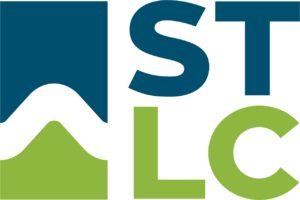Mineral Collecting in St. Lawrence County
St. Lawrence County is mining country. For nearly 200 years it has supplied New York State with abundant raw materials that include iron, zinc, talc, Wollastonite, limestone and building stone of sandstone and marble. The back roads once were dotted with active mines and quarries whose remains still appear in the landscape. The fine homes and commercial buildings still standing in some tiny villages are an expression of a long vanished source of local wealth.
Mineral collectors revere the county for the quality of its specimens. The crystalline bedrock has yielded a host of minerals, some rare, but most of common rock forming silicate and sulfide minerals that have unusual color, size and crystal shapes. Specimens of feldspar, diopside, tremolite, tourmaline, spinel, galena, sphalerite, pyrite, millerite, magnetite, fluorite, and many others, reside in display cases of museums throughout the world.
The abundance and variety of minerals are chiefly due to the presence of ancient crystalline rocks. The wedge shaped county opens northwest toward the St. Lawrence River and a thin covering of sedimentary rocks. The southern and northwestern portions are underlain by crystalline, igneous and metamorphic rocks of Precambrian age. For example, the exposed gray granites along State Highway 11 between Antwerp and Gouverneur have uranium-lead ages of 1.2 billion years. The cream colored marbles intruded by the granites are even older. These crystalline rocks are evident throughout the county, and visitors may want a geology guidebook. The rocks are part of the mineral rich Canadian Shield and the Grenville Province which extends from Labrador to southwestern Ontario. The province extends into New York State in the Thousand Islands and includes the Adirondack Mountains.
Mineral production began with the settlement in the early 19th century and the search for iron and lead ores. Refined mineral products were sorely needed in isolated frontier communities. Furnace construction was underway in Rossie in 1813 on land owned by David Parish. By 1838, the county had at least 8 iron furnaces, 7 foundries, 3 lead mines, 4 marble mills and 2 quarries. Quarries near Potsdam and Hopkinton supplied blocks of red Potsdam sandstone for lining the furnaces and for building local homes, businesses, churches and schools.
In 1836, New York State established a Geological and Natural History Survey. Explorations by Rensselaer and Rutgers trained geologists helped publicize the rich mineral potential of the Adirondack region. Galena (lead sulfide) was mined near Black Lake. Pyrite (fool's gold) south of Canton provided sulphur and sulphuric acid for the paper industry. The first talc mine in the United States opened in 1878 on a farm near Talcville. Gouverneur became known as "Marble City," thanks to buildings of cream colored marble from local quarries. Beginning in the 1940's but now closed, Jones and Laughlin Steel Corporation operated a very large, open pit iron mine near Star Lake.

Check Out Gouverneur Museum's Mineral Collection
Extensive mineral collection can be seen at the Gouverneur Museum, 30 Church Street, which is open to the public Wednesday and Sundays from 1 to 3 p.m. or by appointment (315) 287-3193.
Shop the Annual Rock Sale in August
The St. Lawrence County Rock and Mineral Club hosts a sale and show each year in August. The show features special fluorescent rock hunt for youth and special outings in the area for collection, as well as swapping and selling.




